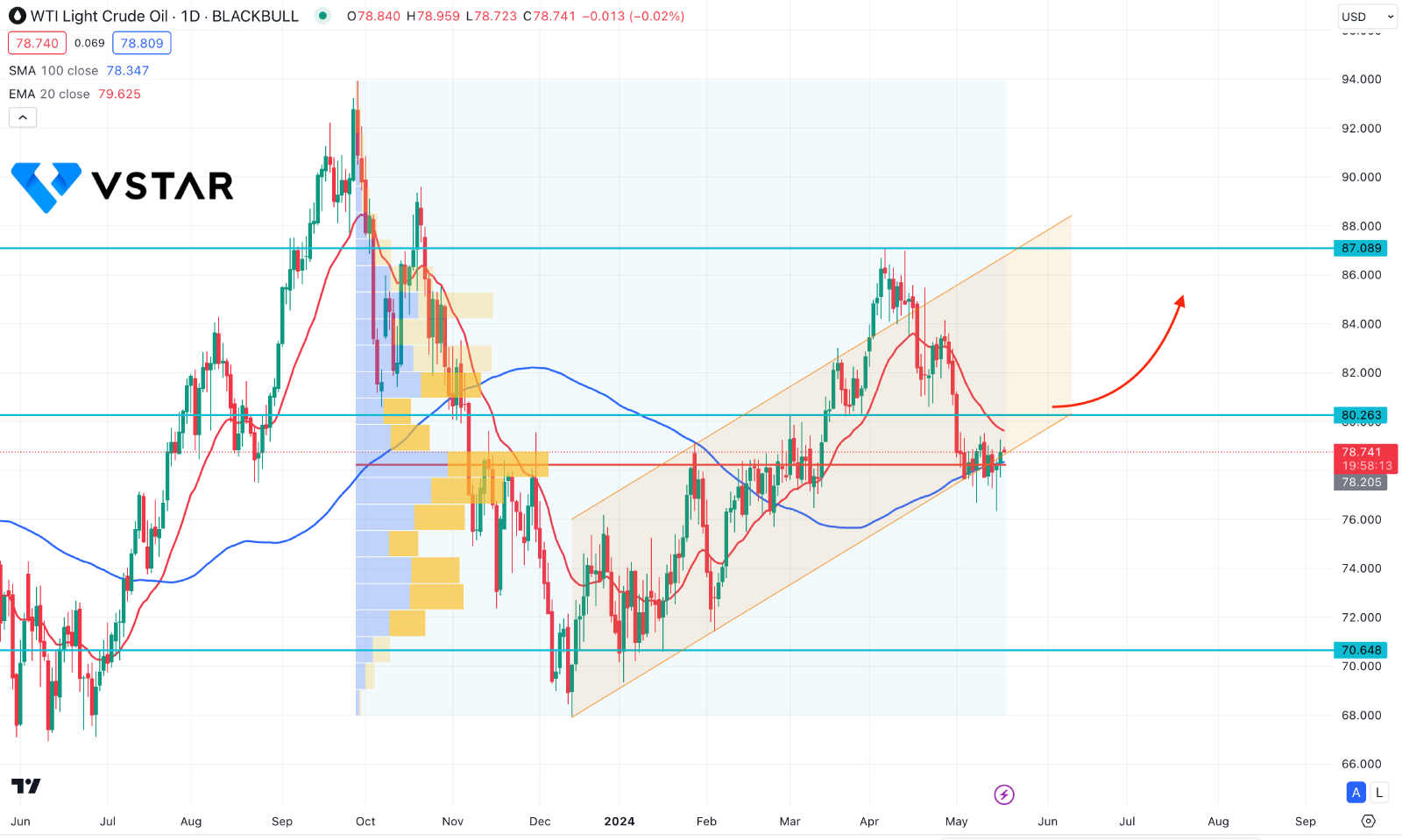The buying pressure in Crude Oil became corrective as soon as the weekly EIA report revealed a decreased inventory. In addition, an S&P 500 surge to an all-time high was indicative of optimistic economic conditions, which bolstered energy demand. Nevertheless, Crude price increases were constrained by the dollar's strength and unsatisfactory global economic data.
US Data Showed A Weaker Labor Market
The economic data released on Thursday was predominantly pessimistic regarding energy demand. An initial unemployment claims figure of 222,000 in the United States is 10,000 fewer than the anticipated 220,000, suggesting a weakened labor market. In addition, April's manufacturing output in the US fell unexpectedly by 0.3% month-over-month, as opposed to the 0.1% increase that was anticipated. April building permits in the US decreased by 3.0% month-over-month to 1.44 million. Quarter-over-quarter annualized GDP for Japan fell by 2.0% in the first quarter, less severe than the expected decline of 1.2%.
Geopolitical Uncertainty
Precautions regarding the Hamas-Israel conflict served as a foundational source of support for crude oil prices. Although the Biden administration objects, the Israeli military is making preparations to conduct major operations in Rafah, southern Gaza.
Additionally, there is concern that the conflict may escalate to involve Hezbollah in Lebanon or Iran directly. A disruption in worldwide petroleum oil supplies has resulted from Houthi rebels' assaults on commercial vessels in the Red Sea, which compelled vessels to reroute around Africa.
EIA Update
A decrease in floating storage has a positive impact on petroleum prices. The quantity of crude oil stored on stationary vessels decreased by 11% week-over-week, reaching 55.92 million barrels as of May 10; this is the lowest level in four years.
Furthermore, the EIA report emphasized that as of May 10, crude oil inventories in the United States were 3.9% below the five-year seasonal average, petrol inventories were 1.2% below, and distillate inventories were 7.1% below. The weekly output of crude oil in the United States remained unchanged at 13.1 million bpd, which is marginally lower than the all-time high of 13.3 million bpd.
Oil Prices Forecast (USOUSD) Technical Analysis
In the daily chart of US Crude Oil, the recent price showed extensive selling pressure below the ascending channel support. Moreover, the price became volatile below the 20-day EMA line, suggesting a possibility of a breakout.

However, the 100-day SMA is the major support, from where a bullish reversal is visible. In that case, a bullish reversal with a daily close within the channel could extend the buying pressure above the 87.08 level.
On the other hand, the high volume level remains closer to the current price, suggesting a potential breakout. In that case, a bearish continuation with a stable market below the 100-day SMA could lower the price towards the 70.64 support level.




